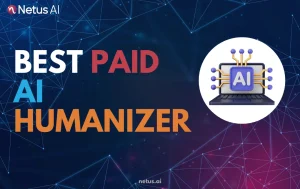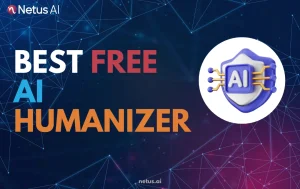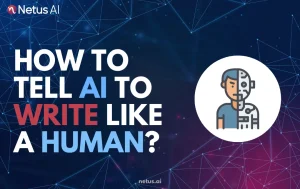
Why Students Are Getting Flagged Even When Writing Honestly | NetusAI
Learn how students can use AI tools for writing and research without getting flagged by AI detectors. Get tips on humanizing content and staying academically safe.
The Dos and Donts of Writing Unique Copy: How to Avoid Paraphrasing Pitfalls

Content writer and editor for Netus.AI
The Dos and Donts of Writing Unique Copy. In today’s fast-paced digital landscape, organizations rely heavily on quality content to maintain a strong online presence. This content can range from advertisements and marketing materials to product reviews and research articles, making it essential for firms to employ skilled creators who can craft unique, engaging, and informative pieces. For educational purposes, students also strive to produce original content in the form of research papers. A well-rounded understanding of a given subject is crucial in setting apart an impactful write-up from a run-of-the-mill article.
With the rapid growth of bloggers, content creators, and writing agencies, the responsibility falls on these individuals to conduct in-depth research and present accurate information to readers. Their passion and dedication can be recognized in the quality of their work, as they strive to deliver authentic content that resonates with their intended audience.
Plagiarism may arise from various factors while creating content. One such factor is the lack of creative ideas when writers struggle to develop unique thoughts. In this situation, they might resort to using others’ content without proper consent, violating copyright rules.
Another reason for plagiarism can be tracing back to students or writers dealing with topics beyond their understanding. Initially, they begin with enthusiasm but struggle with comprehending the subject matter, which ultimately results in them plagiarizing content.
Strict deadlines and instructions can limit creativity and act as a barrier for content creation. Under these circumstances, writers might feel pressurized and copy content from others.
Moreover, people often think that summarizing or paraphrasing other writers’ content is not plagiarism because they are not directly quoting the source. However, even when paraphrasing, full recognition is required, following citation styles like APA and adhering to academic integrity, to avoid content theft.
Paraphrasing is the act of rephrasing a piece of text while maintaining its original message and meaning. It helps convey the writer’s main point without making the reader go through the entire article. To effectively paraphrase, one should understand the context and overall meaning of the original idea, summarize it, and use a signal phrase where necessary. This process may involve rewording technical terms while ensuring the definition remains accurate. By utilizing a paraphrasing strategy, readers can quickly grasp the essential concepts presented in the text.
When creating content, it’s essential to maintain originality, avoid plagiarism, and produce high-quality material. The following are some dos and don’ts for crafting unique copy that remains informative and engaging.
In summary, maintaining originality while writing unique copy involves rephrasing the original text using your own words, incorporating synonyms, proofreading, and acknowledging sources. Recognizing the shortcomings of automated tools and investing time in refining your work ensures the creation of informative, engaging, and, most importantly, unique content.
To paraphrase effectively, read the original text thoroughly and understand the main ideas. Then, express the key points using your own words and sentence structures, while still maintaining the original meaning. This may involve using synonyms, altering word order, and simplifying complex phrases. Keep the original intent intact and check your work against the original to ensure accuracy.
Acceptable paraphrasing involves rewriting content to make it unique while preserving the original meaning and intent, without any form of plagiarism or distortion. Unacceptable paraphrasing copies the original wording too closely, fails to properly attribute the source, or alters the meaning of the original text.
Always include in-text citations when you paraphrase, to properly credit the source and avoid plagiarism. This applies even if you have significantly reworded or restructured the original text, as you are still referencing another author’s thoughts or ideas.
To ensure originality, consider incorporating the following techniques:
Then, compare your rewritten text to the original, making sure you have not copied any phrases directly, and use plagiarism-checking tools to verify uniqueness.
Avoid these common pitfalls when paraphrasing:
When altering the structure of original text, consider the following best practices:
Always ensure that these changes do not alter the original meaning of the source material, and remain coherent and clear for your reader.

Learn how students can use AI tools for writing and research without getting flagged by AI detectors. Get tips on humanizing content and staying academically safe.

Explore the best paid AI humanizer tools that deliver high-quality, undetectable content. Compare pricing, features, and accuracy to choose the right solution for your needs.

Looking for the best tools to make AI content undetectable? Explore top AI humanizers, bypass tools, and rewriting solutions to pass detectors and sound fully human.

Explore why AI content humanization is essential for SEO success. Learn how human-like rewrites can improve rankings, engagement, and trust with search engines.

Discover the best free AI humanizer tools to make your content sound natural and bypass AI detection. Compare features, pros, and limitations of top free options.

Learn how to prompt AI tools to write like a human. Discover techniques to improve tone, structure, and emotion in AI-generated content for better authenticity and SEO.
@ 2024 Netus AI.